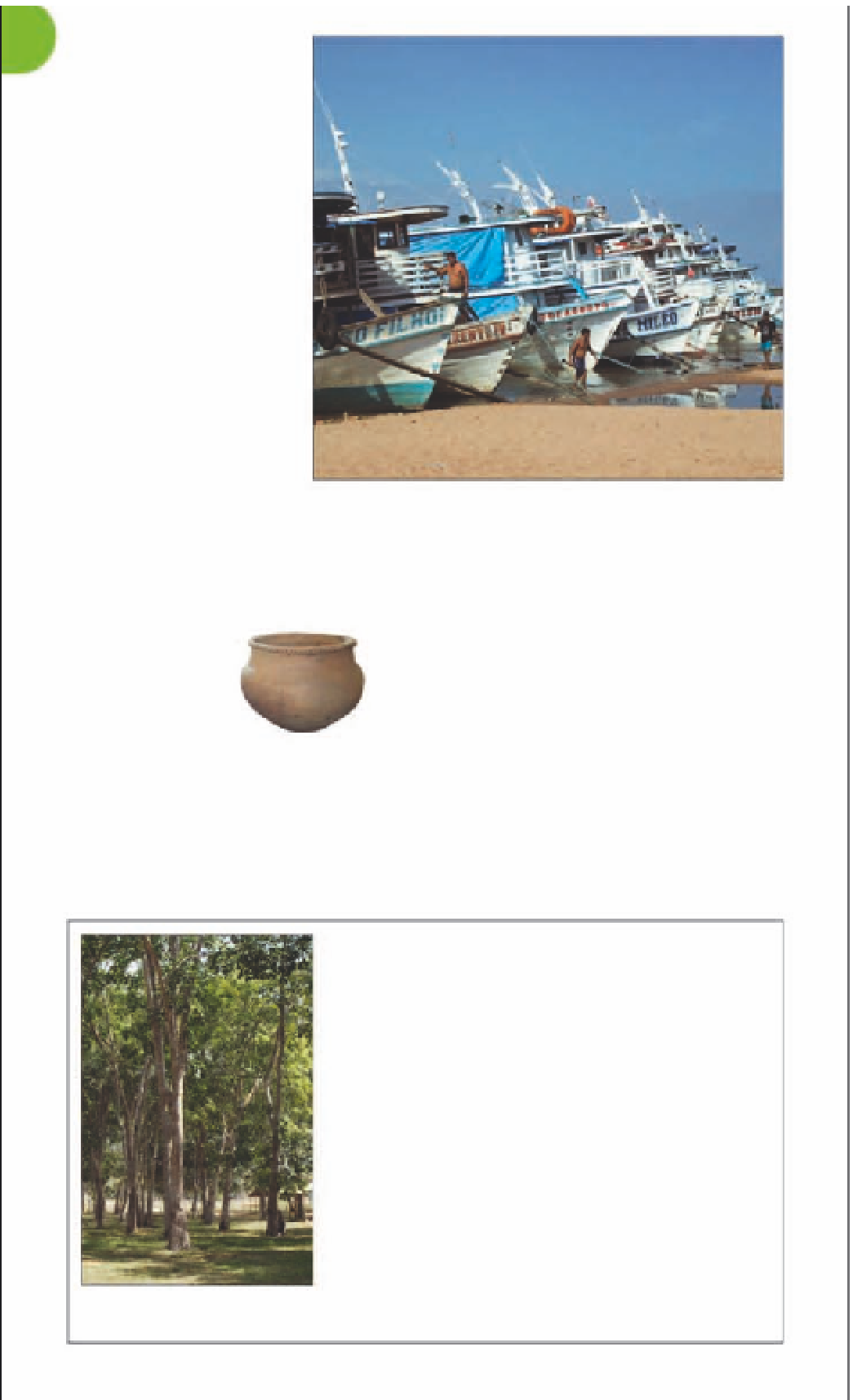Travel Reference
In-Depth Information
Santarém
5
Pará.
*
200,000.
k
~
g
from
Docas do Pará (W of center).
n
Amazon Planet, (093) 3527 1172;
Santarém Tour, (093) 3522 4847.
www
.santaremtur.com.br
Amazônia's fourth largest
city, Santarém sits at the
mouth of the Rio Tapajós,
surrounded by brilliant white
sandy beaches. Modern
Santarém began in 1661 as a
Jesuit mission, following 30
years of military action in the
area to subdue the fierce,
indigenous Tapuiçu Indians.
In 1867, there was an
influx of ex-Confederates
from the USA, a handful of
whose descendants still
survive. However, it was the
rubber boom and Santarem's
strategic position as a pit
stop en route along the
Amazon river that turned
the town into a buzzing
commercial center.
In the late 19th century,
Henry Wickam, an
English settler in
Santarém, smuggled
rubber tree seeds
out to establish
rubber plantations in
Asia. Within 40 years,
and just in time for
World War I, Asian
rubber plantations
majorly outproduced the
Brazilian Amazon.
The local economy is today
based on rubber, logging,
soya, brazil nuts, and tourism.
Ferries moored on the shore of the Amazon river at Santarém
Colorful boats and frantic
movement of produce at the
port and along the attractive
riverfront, are typical today.
An ancient center for the
production of fine
ceramics, the town
showcases its distinct
Santarém Phase
Pottery in a striking
museum, the
Museu
de Santarém
. The
exhibits prominently
feature burial urns,
reputed to be among the
oldest in South America. Also
known as Centro Cultural
João Foua, the museum has
a striking interior, painted by
João Foua, an artist from Pará.
Another attraction is the
Museu de Arte Sacra de
Santarém
, which has a decent
collection of religious art.
Environs
Located 20 miles (33 km)
west of Santarém, the river-
beach town of
Alter do Chão
has fine sandy beaches set
against a calm bay on the Rio
Tapajós. Canoes ferry visitors
across the bay to climb the
low lying hills offering breath-
taking views. Closer to the
main beach, another prom-
inently shaped hill resembles
a church altar.
Fordlândia
, 62
miles (100 km) south of town,
was Henry Ford's first rubber
Burial urn, Museu
de Santarém
THE RUBBER STORY IN BRAZIL
In the mid-1700s, Charles-Marie de la Condamine was
presented with latex syringes from the
Hevea brasiliensis
tree by the Omagua people living in Amazônia. He
returned to France with samples, and rubber became
known to the world. Soon it was being used for everything
from insulation to tyres, and
Hevea brasiliensis
had become
the oil of its day. In Amazônia, where the rubber tree grew
in abundance, foreign banks and companies began to set
up plantations. The rubber boom ushered Manaus and
Belém into the Belle Époque era, with electric lights, lavish
opera houses, and mansions for the rubber barons. Brazil
emerged as the world's largest producer of natural rubber.
The euphoria lasted until 1910, when the British colonies
in Asia - Malaya, Ceylon, and Singapore - outproduced the
Brazilian rubber. Unprepared for competition, Brazil was
elbowed out of the rubber market by 1914. The indigenous
Brazilians, who had been rounded up and forcibly settled
to work on the plantations, returned to relative freedom.
Today, much of Brazil's rubber is imported from Asia.
Belterra, a rubber plantation set up
by John Ford in the 1930s
For hotels and restaurants in this region see p382 and p407





































